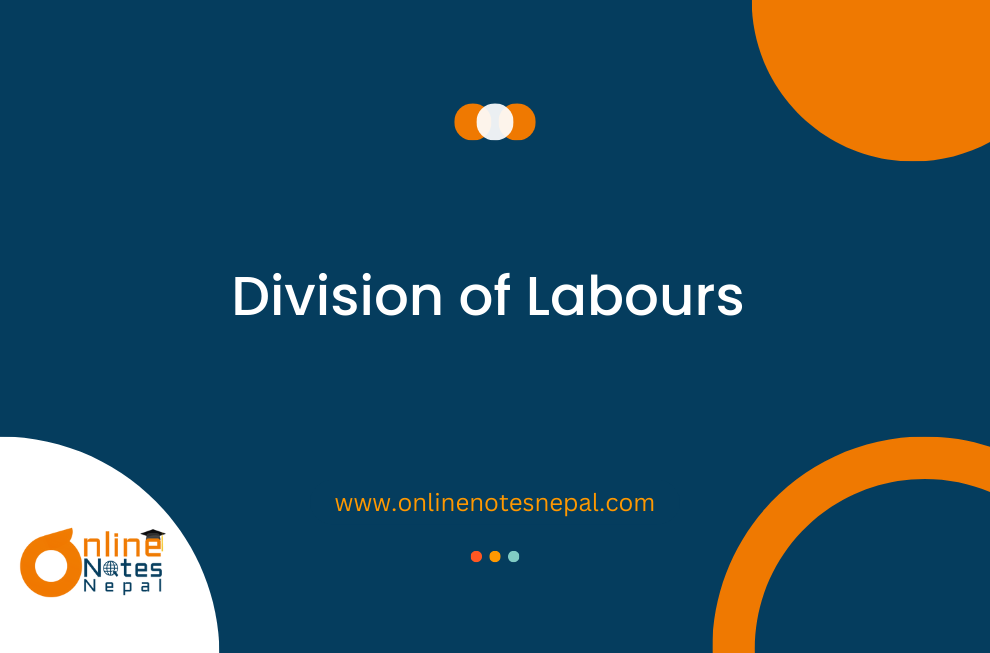Published by: Sayuja Koirala
Published date: 30 Jul 2024

Division of Labour indicates that the primary manufacturing process is divided into numerous small sections, each handled by a distinct worker specialising in producing that specific portion. It is most commonly used in mass-production systems and is a fundamental organizational concept of the assembly line. Breaking down labour into small repeated processes reduces superfluous motion and restricts the use of various instruments and parts.
The advantages of the Division of Labour are explained here:
1. Increase in Production: With the implementation of the Division of Labour, total production increases. Adam Smith mentioned in his book that the advantage of the division of labour can be seen when a worker can produce only twenty pins daily.
2 . Maximum Utilization of Machinery: The Division of Labor is a consequence of large-scale production, which involves the increased use of machines. Conversely, the Division of Labor also enhances the potential for using machines in small-scale production.
3. Increases Producer's profit: Due to the more efficient use of plants and machinery through the division of labour, production increases rapidly, leading to a reduction in the cost of production. A lower cost of production increases the producer's profit.
4. Availability of Commodities at a Cheaper Price: Division of labour leads to mass production, resulting in lower production costs and more affordable goods for consumers, thus improving their living standards.
5. Increase in Efficiency of Labour: With the Division of Labor, a worker performs the same task repeatedly, leading to specialization and increased efficiency.
1. Danger of Over-production: Over-production occurs when the supply of a product exceeds the demand in the market. This often happens when production is done on a large scale due to the division of labour. When supply outstrips demand, it can be very harmful to both producers and workers.
2 . Increased Dependence: When production is divided into several processes and handled by different workers in each department or segment, it may lead to over-dependence. For example, in a readymade garment factory, if the worker who cuts the cloth is lazy, it will delay the work of stitching, buttoning, etc.
3. Division of Labour Kills Creative Instinct: Since many workers contribute to the making of a commodity, no one can claim credit for making it. Labor's creative instinct is not satisfied. The work does not give him any pride and pleasure as no worker can claim the product as their creation.
4. Monotony of Work: Under the Division of Labour, a worker has to do the same job frequently for years. Therefore, the worker feels bored or the work becomes irksome and tedious. There remains no happiness or satisfaction in the job for him.
5. Fear of Unemployment: A worker may live gripped in a small segment of the whole production process of items. This won't add to enough knowledge of the production process. Hence, the division of labour has a fear of unemployment.